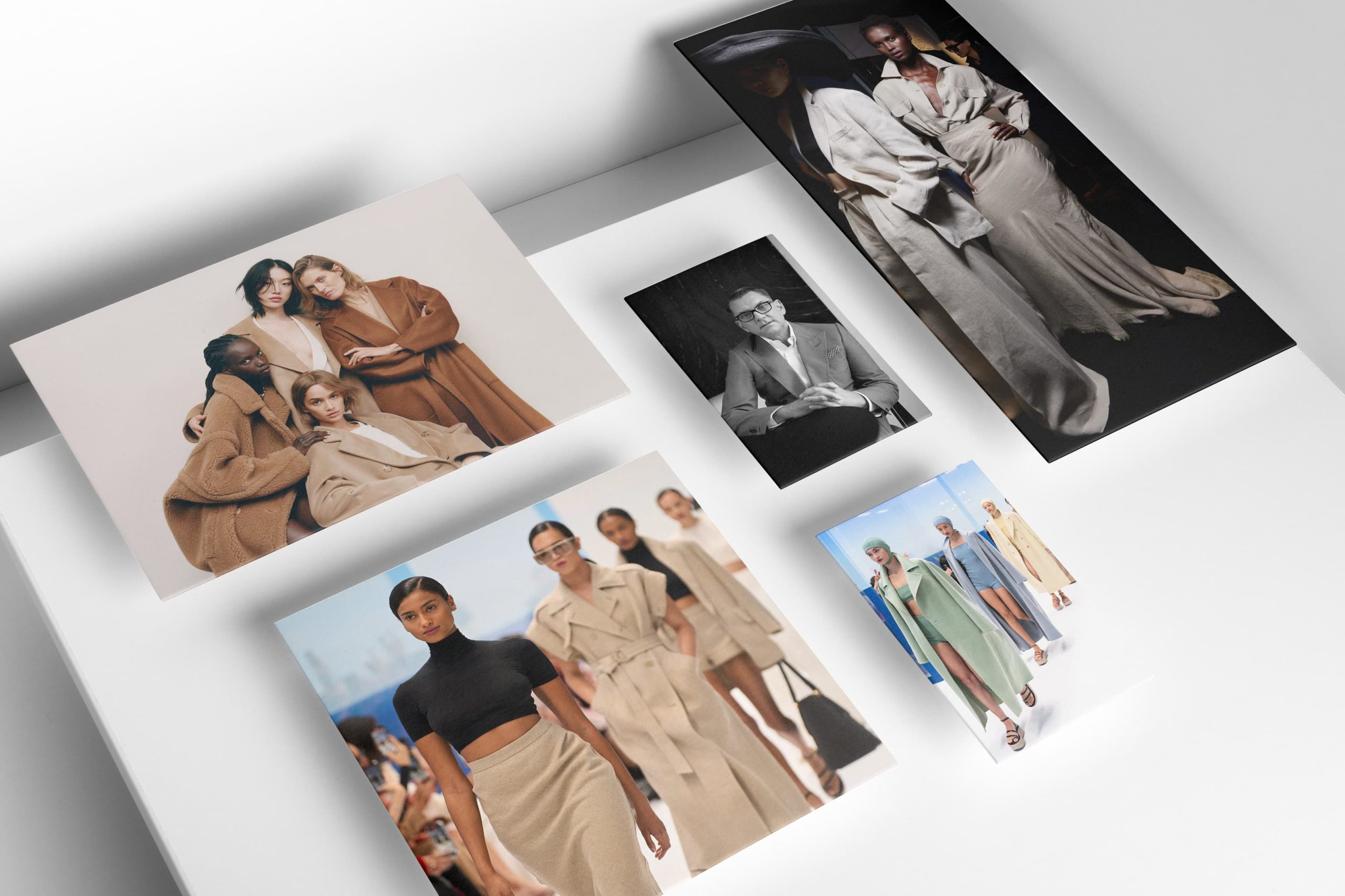Creative Director Ian Griffiths On Embracing the Customer & How He Forgoes Gimmicks for Strong Design
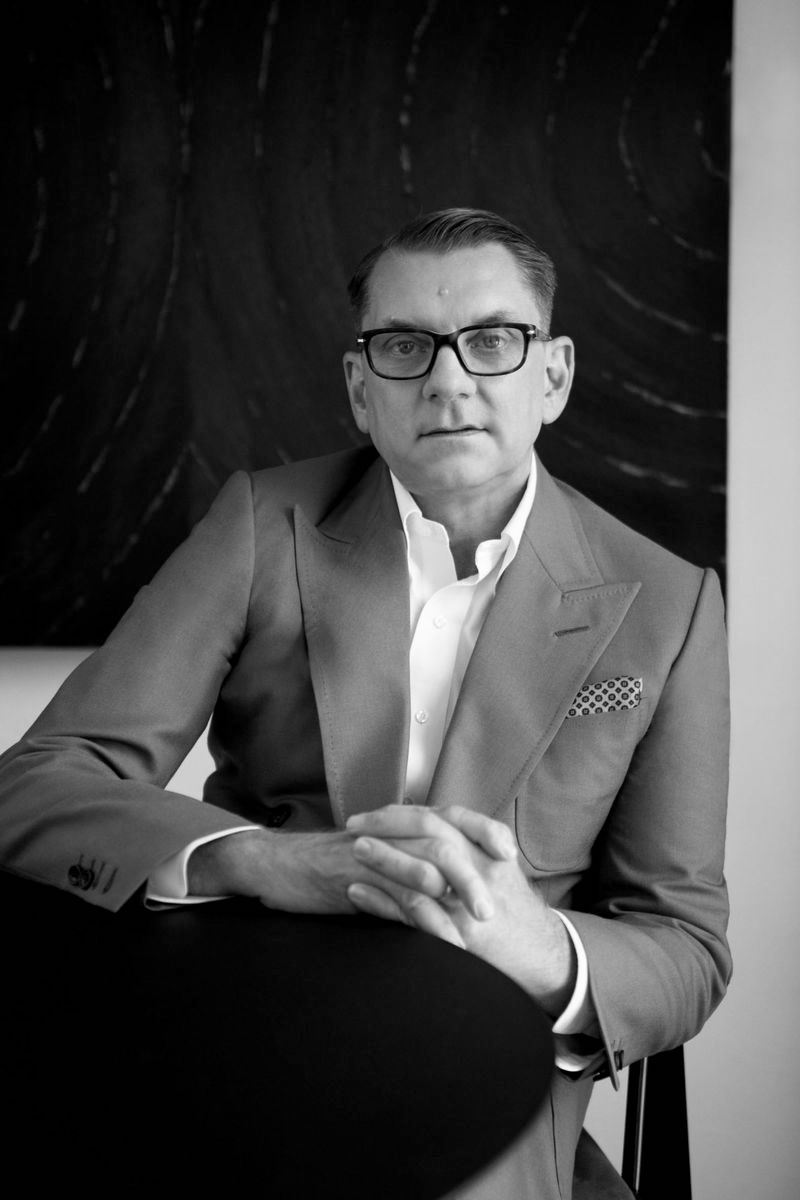
It has been no secret that the industry has suffered in recent years from a sometimes brutal, often tiring game of musical chairs, so there is something to be said for the way in which consistency at the top can actually be one of the most radical things. And not many fashion houses can boast about having a Creative Director whose vision has steered them onto continued success for over three decades, but in Ian Griffiths that is what Max Mara found.
As a brand, it is performing one of those rare tricks of straddling the line between pleasing their loyal customers with season after season of well-turned-out collections and appealing to the next generation, who come to the brand seeking out their ultimate essentials, such as the classic camel coat – known to insiders as the 101801 Icon Coat.
Following Max Mara’s summer 2023 show during Milan fashion week, The Impression, had the opportunity to sit down with Ian Griffiths and get a debrief on his season, as well as invaluable insight on his 35 years with the brand, which he describes as a “one-in-million fit”, a milestone which he celebrated this year.
Max Mara’s Power Play
Joining Max Mara in 1987, Griffiths bore witness to the rise of the power dressing movement, noting “When I joined it was at the height of the first wave of power dressing, and Max Mara had been a protagonist, one of only a handful of companies in the world who wrote that dress code”. It was at the end of this wave that the brand was starting to hear from women that they wanted to move away from uniform-style dressing. And having been part of the brands evolution, the designer has been conscious of women gaining more confidence and in turn being more willing to experiment
My mission from the beginning was to take the theme of dressing to empower, and inject excitement, choice, and the possibility of self-expression into that dress code.”
– Ian Griffiths
Though the brand is known as a staple for classic wardrobe additions, we shouldn’t make the mistake of thinking that every Max Mara woman is conservative, and in keeping aligned with how women’s attitudes are changing, they have never ceased to inject an element of cool, of toughness into the houses’ designs to reflect this.
An Ode to Escapism
Escapism and fantasy have been major themes across the season, chiming with the need to break away from the never-ending cycle of negative news, and in this show, we got the brands version of that. Where XXL volume in the form of wide leg pants and textured fabrics which were derived from nature abounded.

The main inspiration for the spring summer 2023 collection was Riviera Style and Renée Perle, the ‘silent muse’ and lover of photographer Jacques-Henri Lartigue. Taking the location as the starting point, Griffiths sought to capture the region in its heyday, as a way to “evoke some kind of emotional response”. Thinking of the intellectuals and artists of the Jazz Age who congregated there, such as F. Scott and Zelda Fitzgerald who would often holiday there, and of course the images captured by Lartigue of Perle, the designer looked to touch a “cultural nerve that resounds with people”. Especially now when consumers are looking for ease and to some degree comfort in the past.
The use of colour in singular monochromatic statements is part of the house DNA, and this collection mixed in with the undyed naturals, soft whites, and deep navy, were faded shades of gelato, which offered a satisfying break in the mid-section of the show. In breaking down the colour selection process Griffiths said
“I was looking at magazines from that period of the 1930s which because they’re very often faded, have those kinds of dusty pastel colours. Not just straightforward pastels, but a colour that looked like it had faded in the sun. So that gave me the idea of taking our three Max Mara icon coats – the Manuela, Ludmilla, and 101801 – and redoing them [in these washed-out fabrics]. So, you really got the sense of something that had been bleached in the sun.”
– Ian Griffiths
Balancing Inspiration with Identity
The million-dollar question of how to continue the relevancy and modernisation of a brand like Max Mara, which has been in business since 1951 is one the designer approaches pragmatically. Considering it simply ‘his job’ he revealed “I often get asked to describe, how you keep that balance, between the inspiration you’re looking at, and the identity of the brand that you’re designing for, well it’s become second nature”.
A trick that many designers of today would do well to employ, is one that Griffiths has honed over his tenure, and that is to develop a radar which alerts him when he feels he is “being influenced too much by the inspiration”. Having learnt to leave some ideas on the table and edit out the unnecessary allows the designer to play with the boundaries of what is quintessentially Max Mara. This often involves keeping in mind what the Max Mara woman – who is a composite of many women in his life, from ordinary women, to celebrities, and most important of all his mother – will respond to during the design process, to avoid leaving behind the identity of the brand.
“Whether I’m looking at the Bauhaus or Eileen Gray (her E-1027 modernist house was a key inspiration for summer 2023), there’s a Fil Rouge – common thread – in the woman who wears the clothes, she’s the primary inspiration, everything else is secondary”
New is Not a Necessity
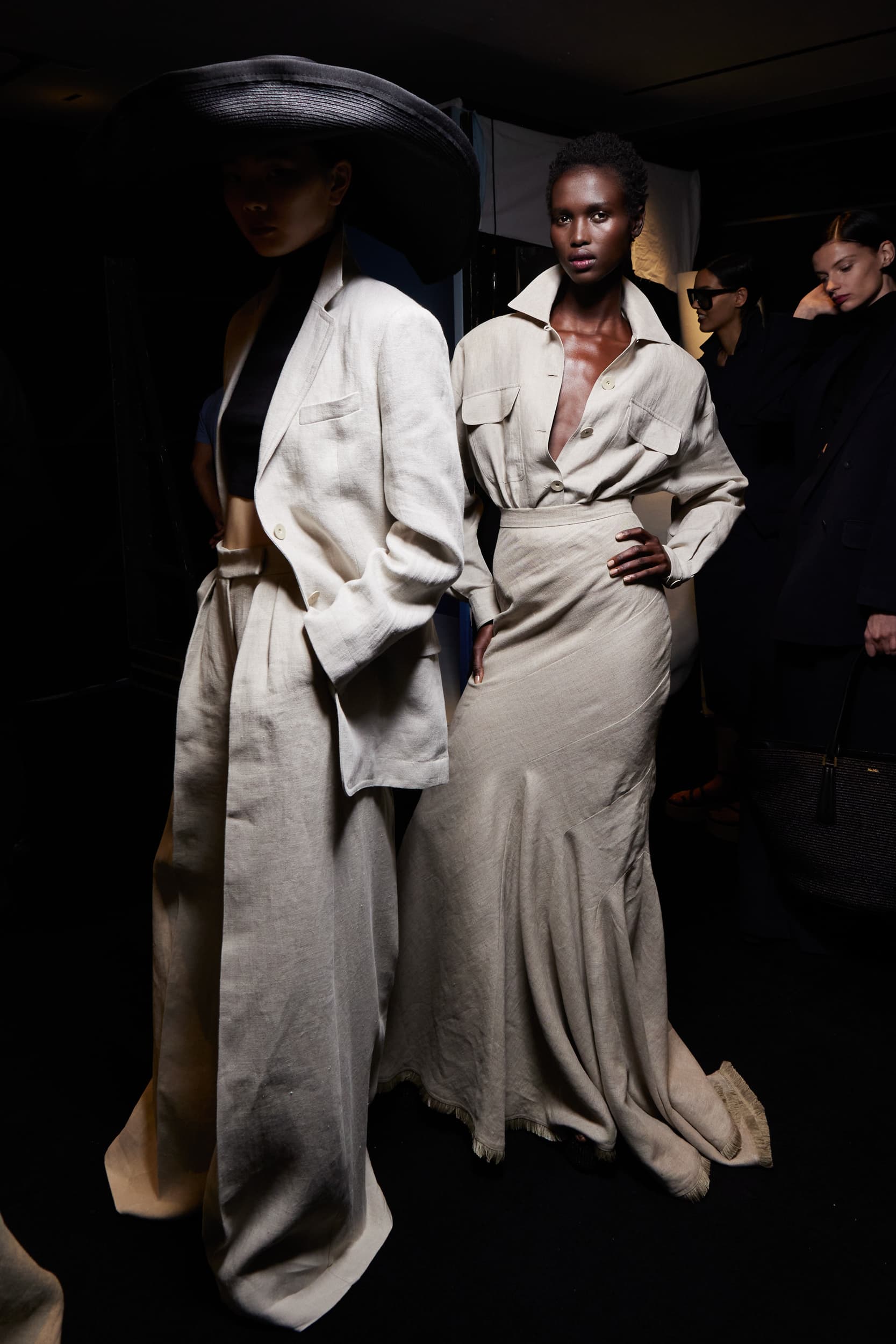
The pressure of the never-ending quest for the ‘New’ in fashion, is not one the designer subjects himself to, as when he was developing the ultra-wide-leg pants for the show, he didn’t overthink their inclusion. Having taken inspiration from a photograph of Renée Perle in a pair that mimics sailor pants, he started there, believing “If they were stylish then, and that’s what attracts you, then they are going to be stylish now”. Whether it is the wisdom that comes with age or having been with a brand which must now feel like home, Griffiths doesn’t torture himself over gimmicky ideas each season, he lets each project determine the path he’ll follow, saying “I always think you should really go with your instinct, and resist any urge to torture yourself with the idea of trying to come up with something that is unexpected, the unexpected will come”
Back to Nature
What set apart this collection was the application of textured natural materials, which gave the oversized shirts, sleeveless trench coats, and sailor pants a different kind of energy, taking these pieces back to a sense of raw imperfection in the unprocessed fabrics, such as linen, which are perfect for this moment. And even though linen is not a new discovery, Griffiths said “For a lot of people it will mean being exposed to something they were not aware of, as if it was a completely new material”. But for the seasoned Max Mara customer, there will be a familiarity there, as the fabric was widely used in the eighties.
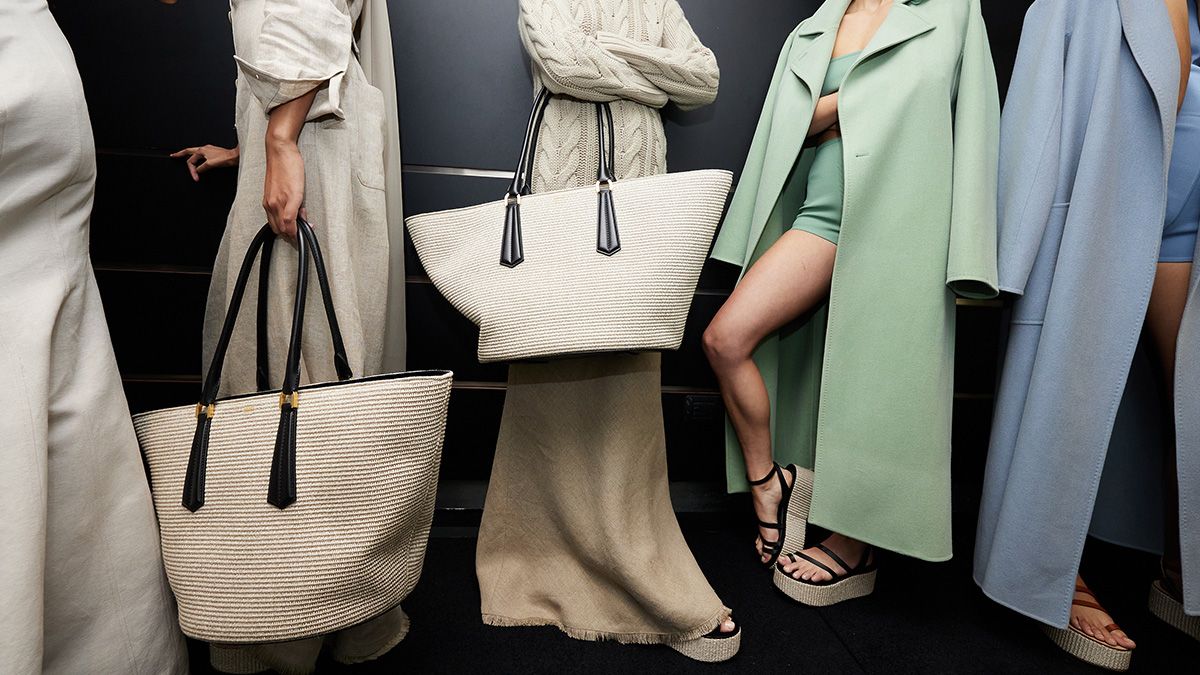
The incorporation of lino grigio meant playing with undyed and natural colours, and adding character through surface texture, and over time with wear – due to the nature of the fabric – each piece will change and mould to the wearers body. Griffiths was looking to create something new by putting these raw fabrics into semi-formal, elegant silhouettes, such as the fishtail skirt.

A Sense of Timelessness
Timelessness and buying better are buzz words that are being thrown about when it comes to fashion, and in turn the effect that it is having on the climate globally, yet in the designers opinion it’s about staying away from anything gimmicky, and using those built-in sensors to stay on brand, confirming that “Alarms start ringing when we’re going into an area that’s too gimmicky, that we’re doing things that aren’t going to have longevity. I don’t want to design those type of things”. Conscious of the duality of needing to create a story or narrative on the runway which brings the collection together, and at the same time developing pieces that will work individually when taken out of the context of the runway show and into the customers wardrobe, maintaining a validity for the next 5, 10, 20 years.
Building a Foundation (wardrobe)
As the brand continues to attract younger customers, Griffiths recommendation for those who come into the world of Max Mara and want to build their foundation are “An iconic coat, one of the four icons – the Teddy, the 101801, the Ludmilla, and Manuela – and after that a classic suit in pure camel hair, or in the case of this summer’s collection lino grigio”. It has been ironic for the designer to see the more established customer come in and want to try something new in the form of “more expressive ideas”, as they already own the icons, they are more willing to experiment.
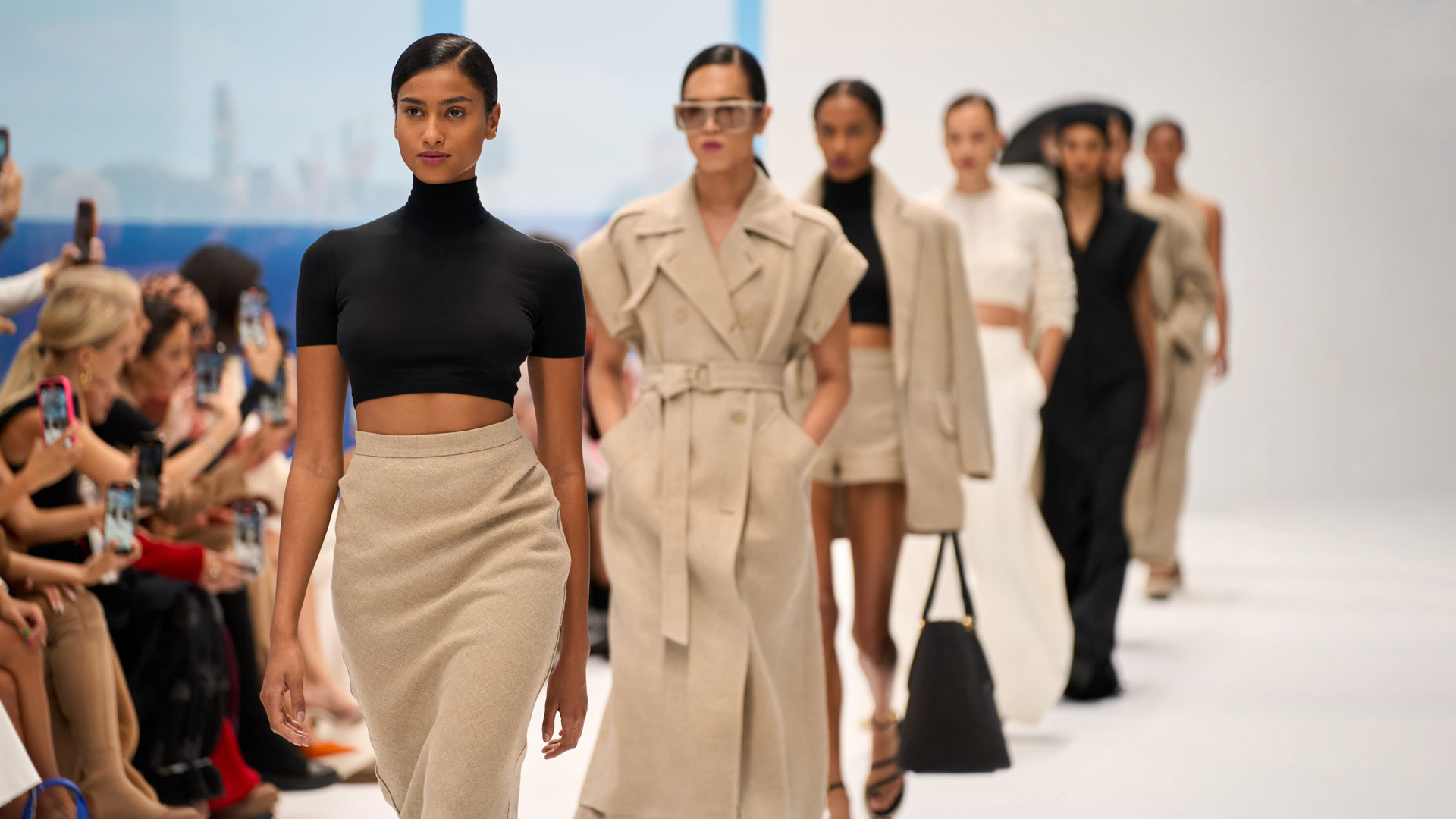
Recognising his privileged position, heading up the Creative Direction of one of the industry’s most respected brands, the designer acknowledges the necessity of being given time to refine and grow with a brand on your own terms
When I see Creative Directors moving from one brand to another, I just wonder how they do it. How do you go into a brand at such short notice, then within a few seasons be expected to turn it around. I have had years to think about who I was dressing and when I finally got the opportunity to be Creative Director, I knew what I was working with. The heritage of the brand is an incredibly important thing, which I know so well, and because I love my job so much, I’ve added to that heritage, rather than chipped away at it or destroyed it as you can do in some situations.”
– Ian Griffiths
